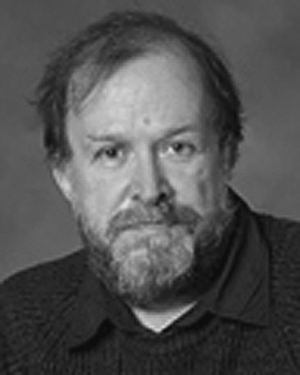Bill Moran received First Class Honours B.Sc. degree in mathematics from the University of Birmingham, U.K., in 1965, and the Ph.D. degree in pure mathematics from the University of Sheffield, U.K., in 1968.
He is with the Department of Electrical and Electronic Engineering, University of Melbourne, Australia, where he is the Managing Complexity Theme Leader for National ICT Australia, and Research Director of Melbourne Systems Laboratory (MSL). In 2001, he became a Professor of Electrical Engineering, MSL. Previously, he was Professor of Mathematics (1976–1991), Head of the Department of Pure Mathematics (1977–1979, 1984–1986), Dean of Mathematical and Computer Sciences (1981, 1982, 1989) at the University of Adelaide, and Head of the Mathematics Discipline, Flinders University of South Australia (1991–1995). He was a Chief Investigator (1992–1995) and Head of the Medical Signal Processing Program (1995–1999) in the Cooperative Research Centre for Sensor Signal and Information Processing. His main areas of research interest are in signal processing, both theoretically and in applications to radar, waveform design and radar theory, sensor networks, and sensor management. He also works in various areas of mathematics including harmonic analysis, representation theory, and number theory.
Dr. Moran was elected to the Fellowship of the Australian Academy of Science in 1984. He has been a Principal Investigator on numerous research grants and contracts, in areas spanning pure mathematics to radar development, from both Australian and U.S. Research Funding Agencies, including DARPA, AFOSR, AFRL, Australian Research Council (ARC), Australian Department of Education, Science and Training, and DSTO. He is a currently a member of the Australian Research Council College of Experts.
Bill Moran received First Class Honours B.Sc. degree in mathematics from the University of Birmingham, U.K., in 1965, and the Ph.D. degree in pure mathematics from the University of Sheffield, U.K., in 1968.
He is with the Department of Electrical and Electronic Engineering, University of Melbourne, Australia, where he is the Managing Complexity Theme Leader for National ICT Australia, and Research Director of Melbourne Systems Laboratory (MSL). In 2001, he became a Professor of Electrical Engineering, MSL. Previously, he was Professor of Mathematics (1976–1991), Head of the Department of Pure Mathematics (1977–1979, 1984–1986), Dean of Mathematical and Computer Sciences (1981, 1982, 1989) at the University of Adelaide, and Head of the Mathematics Discipline, Flinders University of South Australia (1991–1995). He was a Chief Investigator (1992–1995) and Head of the Medical Signal Processing Program (1995–1999) in the Cooperative Research Centre for Sensor Signal and Information Processing. His main areas of research interest are in signal processing, both theoretically and in applications to radar, waveform design and radar theory, sensor networks, and sensor management. He also works in various areas of mathematics including harmonic analysis, representation theory, and number theory.
Dr. Moran was elected to the Fellowship of the Australian Academy of Science in 1984. He has been a Principal Investigator on numerous research grants and contracts, in areas spanning pure mathematics to radar development, from both Australian and U.S. Research Funding Agencies, including DARPA, AFOSR, AFRL, Australian Research Council (ARC), Australian Department of Education, Science and Training, and DSTO. He is a currently a member of the Australian Research Council College of Experts.View more 






